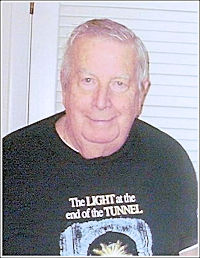by Bill Strossman
[The following letter was sent by the author to Labor Secretary Linda Chao in 2007 after a proposal to OSHA to reclassify smokeless powder as an explosive. This proposal would have resulted in not only idiotic rules such as requiring occupants of a gun store to move outdoors during a thunderstorm, but rules catastrophic to commerce if smokeless propellant were to be reclassified as an explosive. This type of regulatory approach is not forgotten in the war plans of the anti-gun left. Awareness calls for understanding the author's points, as noted in his letter reprinted here, where Bill compares the ability of true explosives to cause catastrophes, not seen with gunpowder propellants. --editor]

Classifying gunpowder as an explosive is erroneous because it doesn't detonate; it deflagrates (burns) and serves as a propellant. In fact, it behaves more like the fuel mixture in your car but with one major difference: gunpowder is a solid while your fuel mixture is a blend of gasoline vapor and air.

Starting with the fuel mixture (I omitted Diesel fuel because it is injected into hot, compressed air and is not a homogeneous mixture), gasoline vapor-air mixture--or natural gas-air mixture, for that matter--will fill the space inside an enclosure with highly flammable molecules that are perfectly elastic and which will try to expand to many times their normal volume when ignited. As they expand inside any enclosure the pressure builds up very quickly. If the enclosure is a building (or a tank with a weak spot) it will rupture when stress limits are exceeded; in a building, it won't be possible to vent the hot gases fast enough. The molecules will spring back to normal size as the building or tank comes apart and results are usually devastating. As an example, a tank truck partially filled with propane failed because of a flaw from improper welding and the resulting explosion destroyed thirteen houses in Berlin, NY in July of 1962. The incident is one of many listed here.
Propane has another characteristic: if it leaks into a space open only at the top (such as the bilge of a large boat) it doesn't dispel; the gas-air mixture stays where it is, awaiting the first spark. That is why propane is not permitted on boats carrying passengers for hire. In order for a solid to produce that kind of destruction it would have to detonate and gunpowder doesn't detonate; if it did then it would be useless to us. An analogy regarding fuel mixture would be the partial detonation in older cars that was known as "engine knock;" it resulted in loss of power and, if not addressed, engine damage (a point to remember is that ignition occurs, as designed, a few degrees before top dead center when the piston has not finished its upward travel).
A similar result would occur if one tried to use a detonating substance as a propellant: lower power and damage to the gun; another possibility would be injury to the shooter. Therefore, we use a compound that, producing a high initial pressure that drops to atmospheric level as the bullet leaves the muzzle. A pressure curve would be similar in principle to the engine cylinder and the average pressure is approximately one-third the peak pressure. Gunpowder, particularly smokeless powder, can produce some very impressive pressures but it must be confined in a very strong chamber to do so. Also, gunpowder only produces about one-tenth the energy of an equal weight of gasoline. There are a few powders known as double base type that contain a small amount of nitroglycerin bound into the basic compound. These are safe to handle because nitroglycerin is not nearly as sensitive to shock when bound in a porous material; in fact, dynamite requires a secondary explosion in the form of a blasting cap before it will detonate. In fact, the double base powder gets an extra kick from the nitro but it burns instead of detonating.
Here we come to the difference between explosives and propellants. Explosives release their energy by detonating instead of burning. They vary in sensitivity from the ultra-sensitive nitrogen iodide (which, when dry, will detonate if a fly lights on it) and liquid nitroglycerin that is free to slosh in the container (also sensitive) to the stable TNT which is stable enough that it requires a secondary explosion to set it off. The key here is that true explosives will detonate when they decompose while propellants do not.
Another difference with smokeless powder is that if pressures cause the container to fail it will only rupture enough to vent the gases. This could be a fire hazard and cause burns to skin but it won't blow up the room. Black powder is sensitive to static electricity and can produce a dangerous flash when touched off and needs greater caution when handling and the can is best kept grounded. It is also the only powder to use in muzzleloaders because it doesn't generate the pressures that smokeless powder does.
On the other hand, ammonium nitrate--a fertilizer--is unstable and has been known to detonate spontaneously as the city of Roseburg, Oregon discovered in 1959. A truck carrying dynamite and ammonium nitrate exploded with devastating results. What may well have happened is that the ammonium nitrate detonated and the shock then detonated the dynamite, considering the stability of the latter. Another incident involving ammonium nitrate took place in Texas City, TX in 1948 that nearly wiped out the town. Then there was the explosion in Sterling Hall at University of Wisconsin, Madison and the explosive was ammonium nitrate.
Ammunition is unlikely to be set off in a fire and experiments under controlled conditions have shown that an unsupported cartridge set off in a cardboard box is incapable of shooting the bullet out of the box because the pressure doesn't build very high and it is vented quickly. There was a sporting goods store fire in NJ many years ago in which the fire chief believed--erroneously--that burning ammunition had blown the front window out. However, a firefighter familiar with how ammunition performs investigated the scene and found that cartridge boxes had burned away, leaving their contents unfired. It turned out that the cause of the blown-out window was a pair of SCUBA tanks that had been pressurized.
A substance does not have to be an explosive to cause devastation; one of the worst explosions in United States history occurred in Boston on January 15, 1919 when a storage tank of molasses exploded, sending the contents down the street and sticking people to the pavement like flies on flypaper.
As for electrical storms, there is no reason to send the occupants outside. A properly grounded building--as the vast majority are--will have no problem because the lightning rods will dissipate the electrical energy before it becomes dangerous. Lightning will follow the path of least resistance, not the shortest one; that is why lightning bolts have such jagged shapes. Regarding static electricity, the humidity will be sufficiently high as to make the chances of black powder being touched off during a thunderstorm slim and none. There is no need to order the occupants out of the building and into the rain. In fact, standing outdoors is likely to be more dangerous under those conditions.
Another reason why adding reloading powders to the category of explosives is a mistake: spreading the web too wide will greatly increase the likelihood that a truly destructive device will slip through the net undetected.


BillStrossman
Uploaded: 3/19/2019

